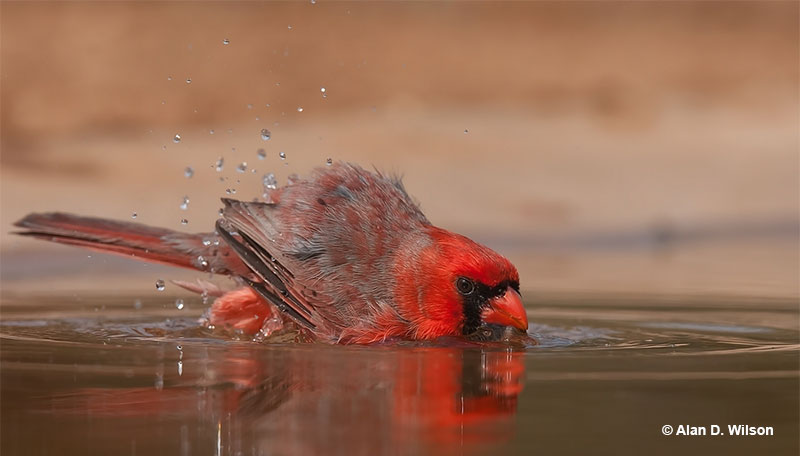
West Virginia is an Appalachian state with 24,230 square miles of beautiful mountain forests, meadows, towns, and farms. Nearly 1.8 million West Virginians share these scenic landscapes with 369 species of birds!
West Virginia state bird is the beautiful Northern Cardinal. West Virginians hear this lovely bird’s cheerful song and enjoy its striking red and black plumage in every corner of the state!
On this page
The State Bird of West Virginia
The Northern Cardinal (Cardinalis cardinalis) became the West Virginia state bird on March 2, 1949. On this date, the West Virginia Legislature voted to make this species an official state symbol.
Although a few lawmakers may have rather voted for the Wild Turkey or Ruffed Grouse, they decided to listen to their constituents and opted for the Northern Cardinal. Before they made it official, this pretty bird had already been chosen to be the state bird by local schoolchildren and birding clubs.
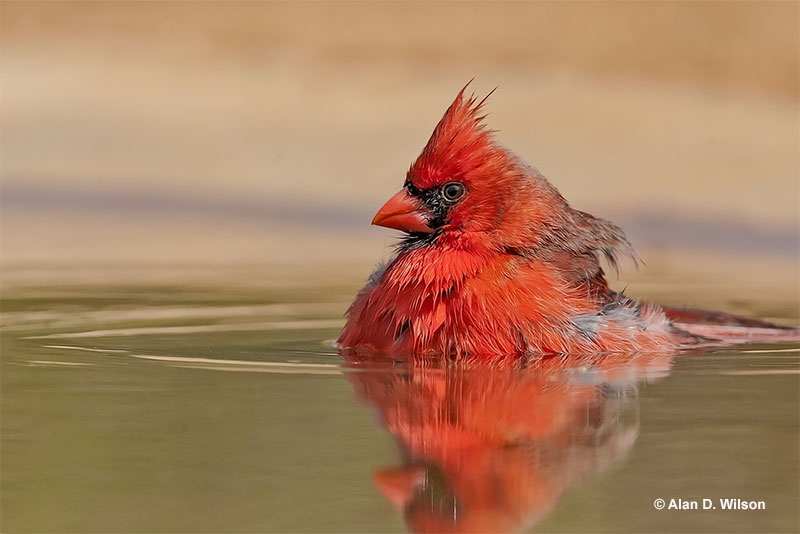
As with other states, during the 1930s, local chapters of federated Women’s Clubs campaigned lawmakers to choose an official state bird. They encouraged Audubon chapters, other birding clubs, and garden clubs to nominate appropriate bird species and help them organize a vote.
The main vote to pick a state bird was usually carried out in public schools, and West Virginia was no exception. Schoolchildren ended up picking the Northern Cardinal, probably because this pretty bird is commonly seen and heard throughout the state.
The cardinal’s beautiful colors make it a hard bird to miss, they made a good choice!
Since lawmakers were also very familiar with this species, they had no problem in passing a resolution to name it the state bird.
Fun Facts about Northern Cardinals
- The Northern Cardinal didn’t always live in Western Virginia. Historically, it was a bird of warmer, more southern habitats. However, it eventually spread north and reached West Virginia during the 1930s.
- This bird is named after the “cardinals” of the Catholic church. Like the cardinal’s red plumage, these clergy members wear scarlet robes.
- Once in a while, “Yellow Cardinals” occur. These aren’t a separate species. They are birds with a genetic mutation called, “xanthochroism,” where red colors are replaced with yellow.
- The Northern Cardinal is a common bird in southern states. However, since other cardinal species live in South America, it is the northernmost member of its family.
- Female cardinals also sing! They don’t sing as loud or as much as males but will sing when sitting on their nest.
- Northern Cardinals are not migratory birds. This species is a permanent resident that survives winter weather by feeding on seeds.
- In many eastern states, the Northern Cardinal is one of the most common birds. It is the official bird of 7 states – Illinois, Indiana, Kentucky, North Carolina, Ohio, Virginia, and West Virginia.
- During the nesting season, it’s not uncommon to see a male Northern Cardinal pecking at a window or mirror. These birds see “another” intruding male cardinal and fight with their own reflection to drive it from their territory!
Identification
The Northern Cardinal is a medium-sized songbird that is eight to nine inches long, has a wingspan of one foot, and weighs 1.6 ounces. Both sexes have a prominent crest, a long, rounded tail, and a hefty, conical, orange or red beak. They are also the same size and weight.
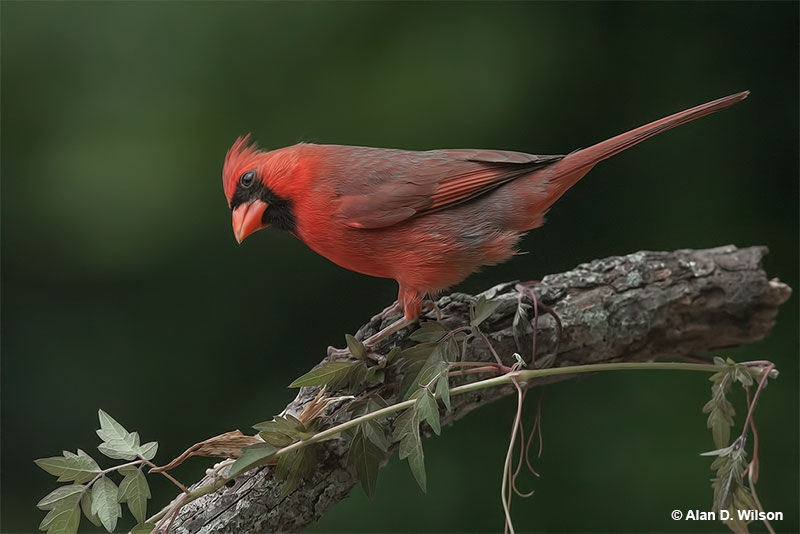
Male Northern Cardinals are bright red birds with dusky red on their wings and tail. They also have deep velvet black on their face and throat. This black patch makes a striking contrast with the bird’s brilliant red plumage!
Female Northern Cardinals lack the bright colors shown by the male. They look so different, at first glance, they can be mistaken for being a different cardinal species!
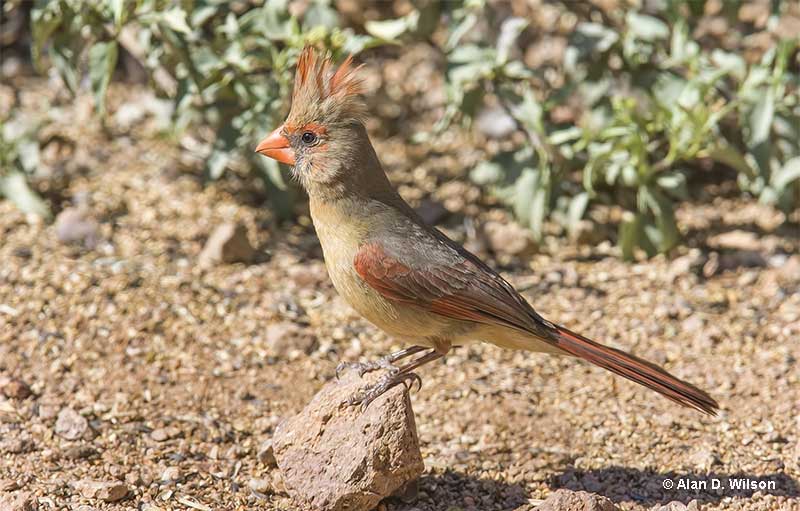
However, with a closer look, we can see that females are shaped just like the males and also have the same orange-red beak. Female cardinals mostly have tan and brown plumage with red highlights in their crest, wings, and tail.
Young Northern Cardinals resemble female birds but aren’t as colorful. They look like dull gray-brown cardinals with dark beaks. Even so, we can still recognize them by big conical beak, and crest.
This species uses its short, rounded wing for brief undulating flight.
What do Northern Cardinals eat?
The Northern Cardinal eats a wide variety of insects, seeds, tree buds, and fruit. However, its diet is very much influenced by the season. For example, in summer, this species eats a lot of insects. In fall and winter, they switch their diet to seeds and berries, and eat more flower buds in spring.
Northern Cardinals eat insects like beetles, grasshoppers, caterpillars, and other arthropods. They forage for them on the ground, in bushes, and in low trees. These birds catch bugs by watching for prey while they hop and move through dense vegetation.
Read more: How to attract cardinals?
When a cardinal sees an insect, it quickly snatches it with its beak. They feed a lot of those bugs to their young.
This species forages for seeds by picking them up from the ground, and also by perching in low vegetation and picking seeds with their beak. They also eat a lot of seeds at feeders. In general, Northern Cardinals prefer sunflower seeds, safflower seeds, and other fair-sized seeds. They also like other types of hard seeds that they crack open with their strong beaks.
Northern Cardinals forage for berries and flower buds by flying into a bush or low tree and picking the fruits with their beaks.
Call
Northern Cardinals are vocal birds that make loud, sharp chip-like note all year long. In spring and summer, this species also commonly sings a cheerful, whistled song. It varies but typically sounds like, “What cheer..what cheer..what cheer..chew chew chew chew chew chew”.
Keep learning: What does a cardinal sound like?
Their song can also be composed of several rapid notes that sound like, “Chewuhchewuhchewuhchewuhchewuh.” We often see male Northern Cardinals singing from high perches on a house, bush, or other elevated spot. However, females typically only sing while sitting on their nest. Their song is similar, but they are quieter and do it to communicate with their mates.
Behavior
Northern Cardinals are common and adaptable birds of second growth, gardens, and other places with brushy vegetation. Although they often hide in vegetation, as long as they can quickly fly to cover, they also feed in open areas.
This species doesn’t usually form flocks, but pairs are often seen together or foraging in the same general area.
One of the best ways to see pairs of Northern Cardinals is by putting up an open platform feeder with sunflower and safflower seeds.
Cardinals prefer these types of feeders and will probably pay a visit early in the morning and later in the afternoon. In the meantime, they spend their time foraging and resting in and near brushy vegetation and feeding their young.
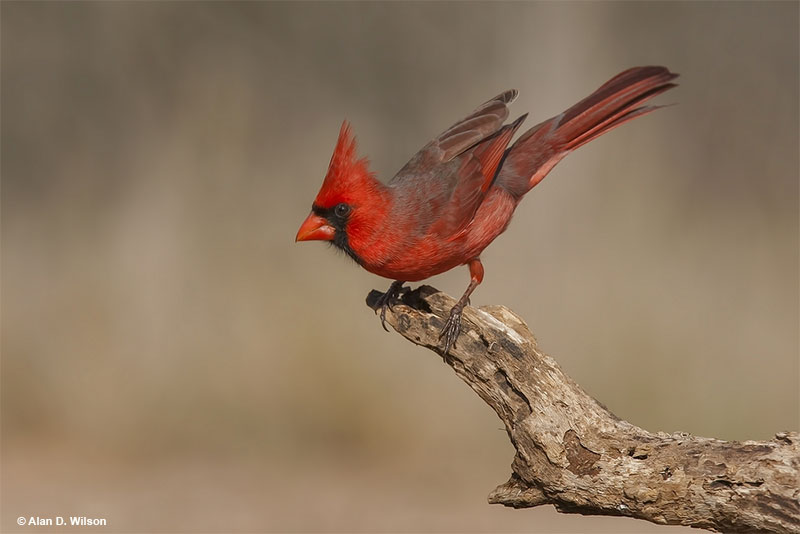
In spring, female Northern Cardinals build cup nests in vine tangles and other types of thick vegetation in shrubs and low trees. She lays one to five eggs that hatch after 12 or so days. After raising the first brood, Northern Cardinal pairs usually nest again and can even raise three broods in one season.
This species does not pose any sort of threat to people or their pets. Instead, they have to be careful of hawks, owls, cats, and many other carnivores that prey on them.
Where Can You See Northern Cardinals?
The West Virginia State birds prefer to live in brushy or semi-open habitats, such as forest edges, suburban gardens, thickets, parks, brush, and mesquite. They are incredibly common for the most part, so it’s no surprise they also hold the title of being the most common bird in West Virginia.
Northern Cardinals nest in a dense tangle of vines or twigs within shrubs and low on trees.
For the most part, Northern Cardinals are not migratory. They stay within their territory year-round, but occasionally wander further away if living conditions are not suitable for them.
Other common bird species in West Virginia
As we already concluded, Northern Cardinals are incredibly common in WV. However, there are some other noteworthy bird species as well:
- American Crows
- Blue Jays
- Song Sparrows
- American Robins
- Carolina Wrens
- Tufted Titmice
- Mourning Doves
- American Goldfinches
- Red-bellied Woodpeckers
See more: Common birds in West Virginia
West Virginia State Bird – Frequently Asked Questions
What is the state bird of West Virginia?
The state bird of West Virginia is the Northern Cardinal.
Why is the Northern Cardinal the state bird of West Virginia?
The Northern Cardinal is the state bird of West Virginia because it is one of this state’s most common and beautiful birds.
When did West Virginia choose its state bird?
West Virginia chose its state bird on March 7, 1949.
What is West Virginia’s state animal?
West Virginia’s state animal is the Black Bear.
What is the state flower of West Virginia?
The state flower of West Virginia is the Rhododendron.

